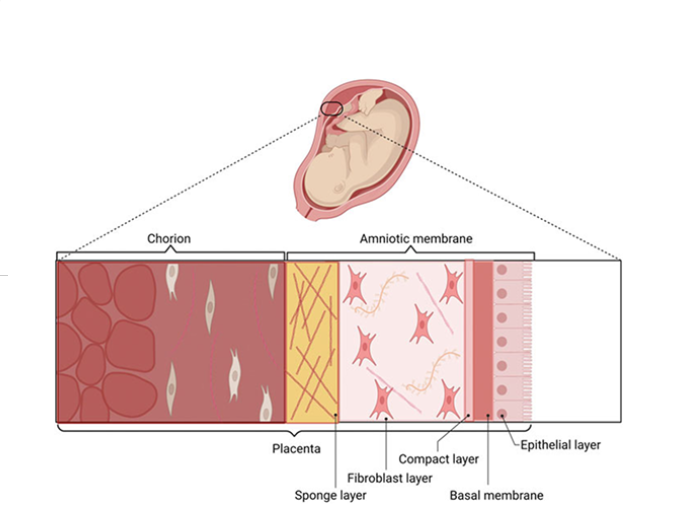Complex wounds present significant challenges for both patients and healthcare providers. These difficult-to-heal injuries often become breeding grounds for harmful bacteria, leading to serious complications that can delay recovery and threaten patient safety.
The medical community has long searched for better ways to prevent infections while promoting faster healing. Modern science has brought innovative approaches that work with the body's natural repair processes. These advanced wound care solutions offer new hope for patients struggling with complex injuries.
Let’s Understand Complex Wounds and Infection Risks
Complex wounds differ greatly from simple cuts or scrapes that heal quickly on their own. These injuries often involve multiple layers of tissue damage and create ideal conditions for bacterial growth. Diabetic ulcers, pressure sores, and surgical wounds that won't close properly fall into this category.
The risk of infection increases dramatically when wounds remain open for extended periods. Bacteria can easily enter through damaged skin barriers and multiply rapidly in the warm, moist environment that wounds provide. Once an infection takes hold, it can spread to surrounding tissues and even enter the bloodstream.
Common characteristics that make wounds vulnerable to infection include:
- Poor circulation: Limited blood flow prevents proper delivery of nutrients and immune cells to the wound area, creating an environment where bacteria can thrive without resistance
- Dead tissue presence: Necrotic tissue provides an ideal breeding ground for harmful bacteria while blocking healthy tissue growth and regeneration
- Compromised immunity: Patients with diabetes, cancer, or chronic conditions have weakened immune systems that struggle to fight off bacterial invasions effectively
Several factors make complex wounds particularly vulnerable to infection:
- Compromised blood flow: Poor circulation limits the body's ability to deliver infection-fighting white blood cells and nutrients to the wound site, making it harder for natural defenses to work effectively
- Weakened immune systems: Patients with diabetes, cancer, or other chronic conditions often have reduced immune function, leaving them less able to fight off bacterial invasions
- Foreign materials: Surgical implants, dead tissue, or debris in wounds can harbor bacteria and prevent proper healing from occurring naturally
- Medication effects: Certain drugs like steroids or chemotherapy treatments can slow down the healing process and reduce the body's natural infection-fighting capabilities
How Regenerative Therapies Combat Infection
Biological Barriers and Protection
Regenerative treatments create protective barriers that shield wounds from harmful bacteria and environmental contaminants. These biological coverings act like natural bandages that stay in place while promoting healthy tissue growth. Unlike traditional dressings that only cover wounds, regenerative materials actively participate in the healing process.
The protective qualities of these treatments help maintain a clean environment around the wound. This reduces the chance for bacteria to establish colonies and cause infections. Many regenerative wound care solutions also contain natural antimicrobial properties that actively fight harmful microorganisms.
Enhanced Immune Response
Modern regenerative therapies boost the body's natural defense mechanisms against infection. These treatments contain growth factors and proteins that signal immune cells to respond more quickly and effectively. When the immune system works better, it can identify and eliminate bacteria before they cause serious problems.
The enhanced immune response also helps reduce inflammation around wounds. While some inflammation is normal and necessary for healing, too much can actually slow recovery and increase infection risk. Regenerative treatments help balance this response for optimal healing conditions.
Key benefits of enhanced immune function include:
- Faster white blood cell recruitment: Immune cells reach the wound site more quickly, allowing them to attack bacteria and other harmful substances before infections can develop and spread
- Improved cellular communication: Better signaling between different types of cells helps coordinate the healing response and ensures all systems work together effectively for optimal recovery
- Reduced inflammatory damage: Controlled inflammation protects tissues while eliminating threats, preventing the excessive swelling and tissue damage that can complicate healing
- Stronger tissue formation: Enhanced immune function supports the development of healthy, infection-resistant tissue that can better protect against future bacterial invasions
What are the Real-World Applications
- Reduced hospital readmissions: Patients treated with regenerative therapies show significantly lower rates of returning to hospitals due to wound complications or infections
- Shorter recovery times: Studies demonstrate that complex wounds heal 30-50% faster when treated with advanced regenerative materials compared to conventional treatments
- Lower antibiotic usage: Healthcare providers report decreased need for antibiotic prescriptions, reducing concerns about bacterial resistance and medication side effects
- Cost-effective treatment: Despite higher initial costs, regenerative treatments prove more economical by preventing expensive complications and reducing overall treatment duration
Conclusion
The evidence clearly demonstrates that regenerative therapies offer superior protection against infection in complex wounds compared to traditional treatment methods. These innovative approaches work with natural healing processes to create stronger barriers against harmful bacteria while boosting immune responses.
Advanced companies such as Life Biologics are leading the development of cutting-edge regenerative materials that revolutionize wound treatment outcomes. As these technologies improve and become more widely available, healthcare providers gain powerful tools for combating infection risks while delivering better patient care.





Comments